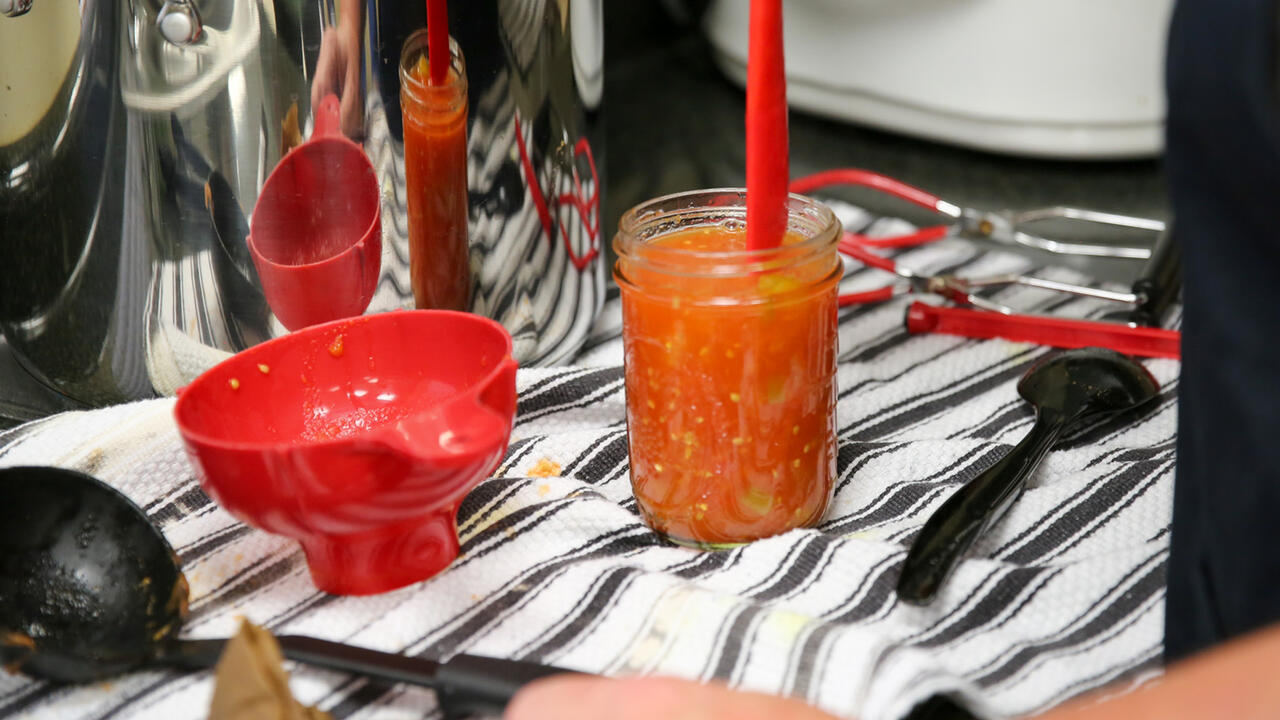Extension for Real Life
Homesteading: How to Preserve Your Harvest

Photo by MSU Extension/Emily Stovall
There’s just nothing quite like popping open a jar of homemade sweet pickles in the dead of winter. One bite, and you’re right back in the warmth of summer, remembering the work, the harvest, and the joy that went into preserving those flavors.
Canning is more than just a homesteading skill. It’s a deeply satisfying way to be self-sufficient, to nourish your family with wholesome food, and to truly know where every bite comes from. Whether you’re putting up sweet strawberry jam, crunchy dill pickles, or spicy homemade salsa, canning allows you to stretch the seasons and your harvest.
If you’re new to canning, you may be wondering what all you can preserve through the process of canning. The possibilities are nearly endless. Many homesteaders start with sweet or savory pickles, green beans, tomatoes, jams, apple butters, salsa and other flavorful sauces. Once you’re comfortable, you can move into canning heartier foods like soups, stews, bone broth and stock, meat, and syrups.
Before you begin, be sure you understand whether you should use a water bath canner or a pressure canner. The method you use depends on the acidity of the food you are canning. This is critical for safety. Water bath canning is ideal for high-acid foods like jams, fruits, tomatoes (with added acid), and pickles. Pressure canning is necessary for low-acid foods like meats, broths, beans, and all plain, fresh vegetables (except for most tomatoes). Using the correct method ensures your food is safe and shelf stable. Never swap one for the other.
You don’t need a mountain of tools to begin, just the essentials:
- water bath or pressure canner
- mason jars (appropriate size for your recipe)
- lids and rings
- funnel
- jar lifter
- clean towel
- a current, research-tested recipe from the Mississippi State University Extension Service or the National Center for Home Food Preservation. The center uses research-backed data supported by and gathered from U.S. Department of Agriculture testing.
Canning is 100% safe when done correctly. Always follow USDA-approved guidelines. If you have never canned before, or it’s been a while since you’ve canned, we recommend that you read the USDA Complete Guide to Home Canning before you begin.
Canning saves money by stretching your harvest and reducing food waste. You can have peace of mind when enjoying your canned food knowing exactly how the food was sourced and processed. Canning also makes meal prep a breeze. All you have to do is open a jar and dinner is halfway done. Canning also gives you peace of mind knowing that you have a pantry full of food instead of having to run to the grocery store every night. And let’s be honest... homemade, canned goods just hit different.
If you’re new to canning, don’t let it intimidate you. Like everything on the homestead, it’s a skill that grows with experience and practice. Start with a simple jam or a small batch of pickles and enjoy the learning process. Remember, you’re not just preserving food, you’re preserving your labor, your time, and your story. That’s the heart of homesteading.
For canning help, check out Extension Publication 1152, “The Complete Guide to Home Canning.” You can also check out the National Center for Home Food Preservation’s website.
Authors
-
 Social Media Specialist
Social Media Specialist- Agricultural Communications